How SPF Compares to Single-Ply Roofing
Your roof is one of the most critical components of your building. As a facilities manager or building owner, picking the right roof to protect your investment in your building and more importantly, your employees is an extraordinarily important decision.
It doesn’t matter if you are looking to recover an existing roof or undergo a completely new roof installation, you will, no doubt find yourself bombarded with several different roofing options and materials. Two of the most common types of roofing membranes are spray polyurethane foam (SPF) foam roofing and single ply roofing.
At their core, both of these materials work in a similar fashion. They both cover the roof with a smooth membrane that can help to boost your building’s energy efficiency. Both of these materials are significantly different than the standard roofing shingles that most folks outside of the roofing industry are familiar with.
Spray foam and single ply certainly have a lot in common. However, don’t be fooled into thinking the two materials are essentially the same or interchangeable. Upon closer inspection, it will become clear that spray foam is the superior choice as a roof covering.
The Basics of Each Material
Spray foam is a polyurethane insulator that has been used as a roof covering for over 50 years. The foam compound is made out of two chemicals, typically isocyanate and polyol fiber, that combine as the foam is sprayed on the roof.
The two chemicals are stored in tanks. Our installation process consists of pumping chemicals from 55-gallon drums stored on a truck. Before the foam is applied to the roof, it is sent from the drums to a proportioner. The proportioner heats the chemicals. In the final steps of the process, The chemical cocktail is sent through a hose to a specialized gun used to spray the foam onto the roof. After it is applied to the roof SPF foam expands to form an extraordinarily dense and rugged membrane.
Although, there are many types of single ply roofing, each one of these individual materials falls into one of two categories, thermoplastics or thermosets. Thermosets are made from rubber polymers. The most popular of these polymers are neoprene, EPDM, and CSPE. Thermoplasticsmost commonly consist of PVC or TPO. Thermoplastic membranes, as you can probably guess are made from various types of plastics.Both types of single ply roofing are touted for their flexibility and ability to stand up to ultraviolet radiation.
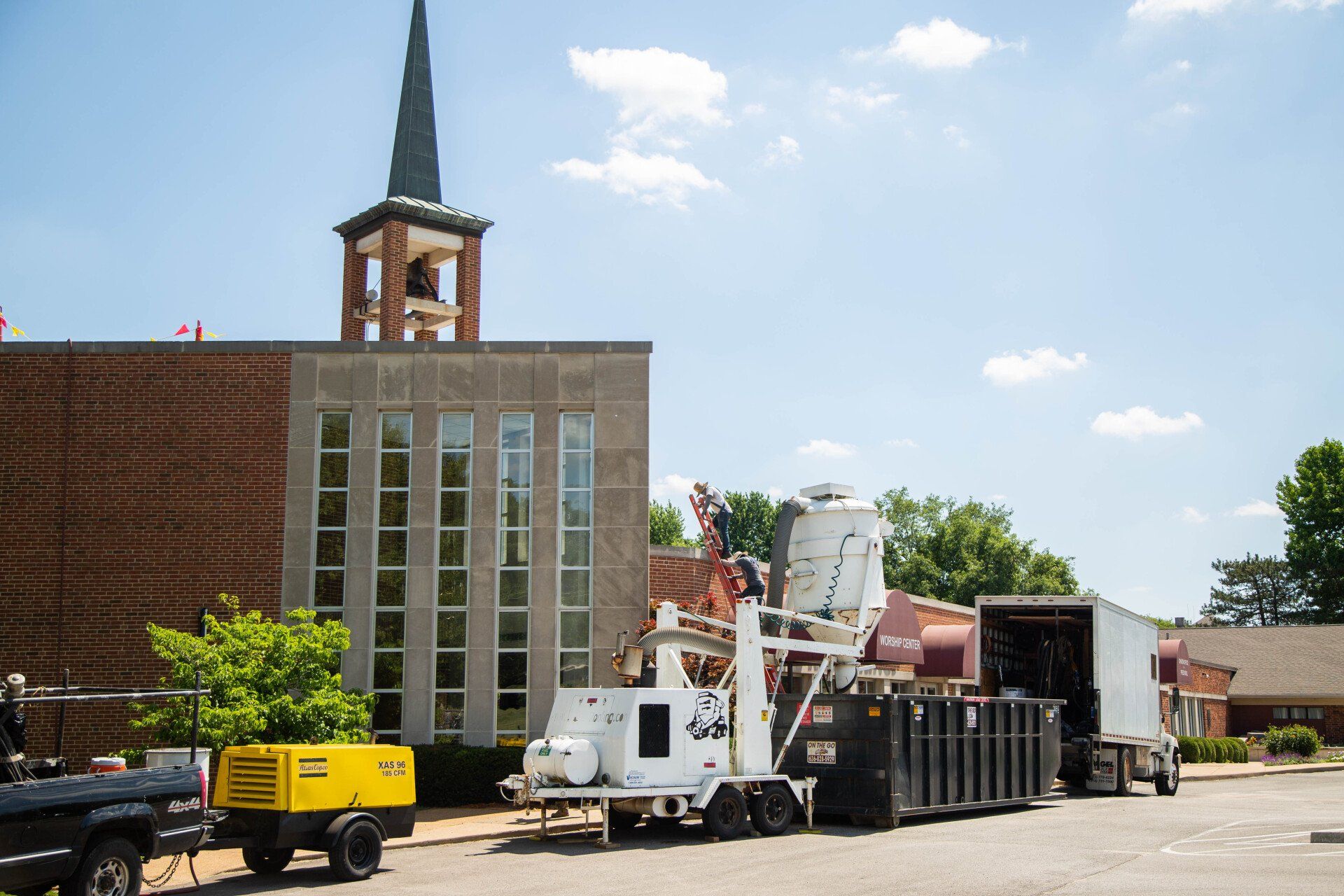
The Installation Process
The installation process for single-ply roof membranes is substantially more complicated than the installation process for foam roofing. Single ply roof coverings cannot be applied directly to the deck of the roof. You must first apply insulation over the substructure of the roof. Each sheet of insulation must be properly anchored to the substructure using fasteners and plates.
Laying down the membrane is the next step in the process. Most single ply membranes come in large roles. Once the single ply is unrolled, fasteners are again used to secure the material to the roof. Where sections of the membrane overlap a heat welder must be used to properly join the seams and secure the single ply roofing.
Most commercial roofs have pipes, vents or similar items that create obstacles. When applying single-ply roofing, the installer has to cut the material around these obstacles and use specific molded pieces to safely seal the area around the protrusion in the roof.
Applying SPF foam is a much more straightforward process. As we mentioned above, the foam is applied with a spray gun. The foam is sprayed on the substructure of the roof and slowly expands to fill the desired area.
A major advantage for foam roofing is in most cases, you do not have to remove the original roof to recover it with spray foam. The foam can simply be applied over the existing roof.
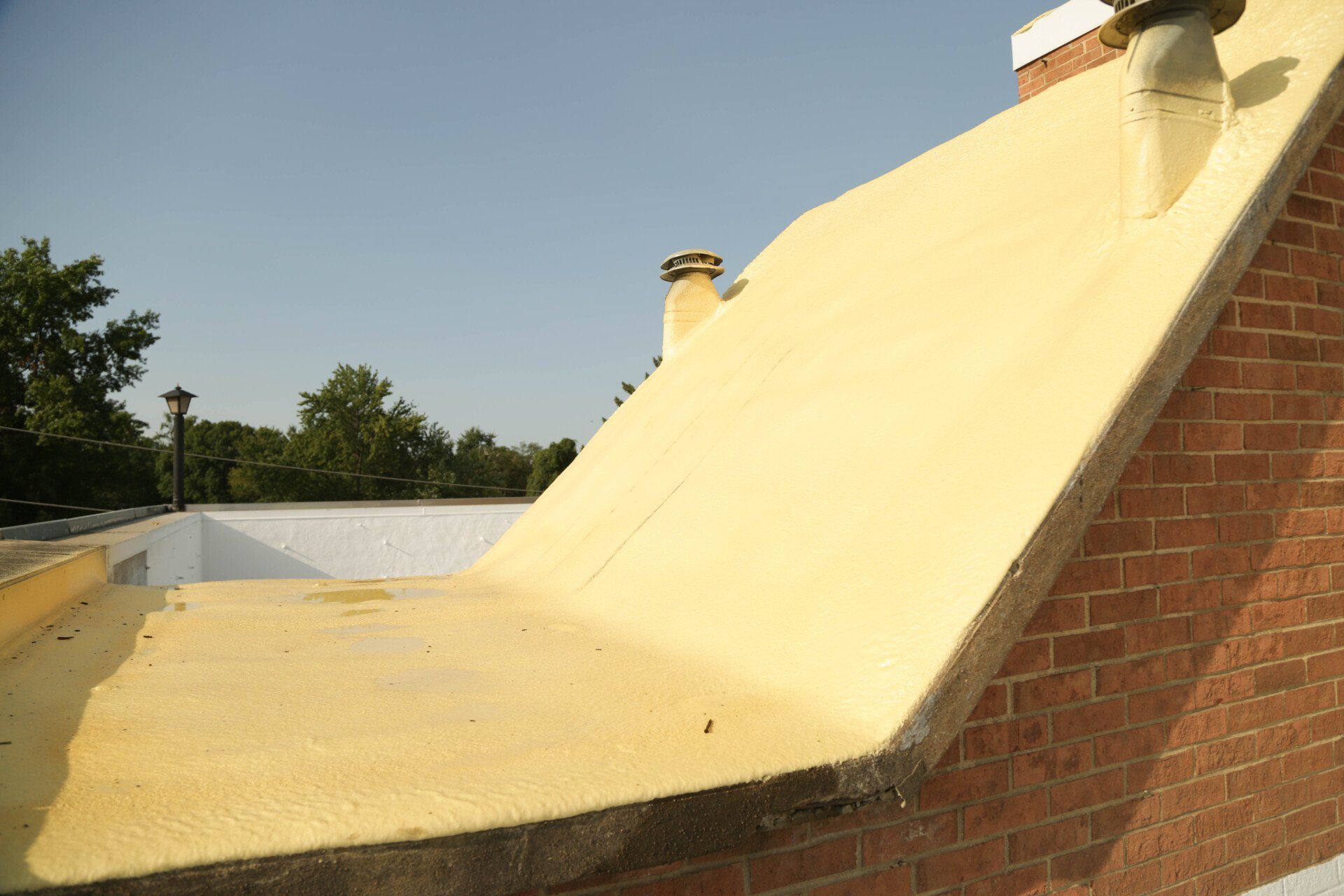
The Advantages of Self Flashing Roofing
A major advantage of foam roofing is spray foam is self-flashing. If an installer encounters penetrating items such as pipes or vents, they simply spray the foam around the outside of the object and the foam expands to form an extremely secure seal. The technical term for a roof with no seams or seals is a monolithic roof.
Monolithic roofs have many functional advantages over their single ply counterparts. They also provide the business owner or facilities manager with increased peace of mind when pitted against single ply roofing membranes. The very nature of monolithic roofs means there are no seams on the surface of the roof. A seamless roof covering means you will have no naturally vulnerable points or areas that are especially susceptible to water or wind damage.
Maintenance and Durability
When it comes to maintenance, durability, and longevity foam roofing is far and away superior to any single ply roofing option on the market.
Foam roofing is relatively maintenance free. An SPF foam roof can easily last for 10 to 15 years with only the most basic of maintenance. Occasionally clearing debris off of the roof is all that is required in terms of regular maintenance. Ultraviolet radiation is the one major nemesis of foam roofing. After about 15 years it is often a good idea to re-apply a fresh topcoat to the roof. This helps to refresh the roof and undo any radiation damage.
On the contrary, single ply roofs require routine maintenance and delicate treatment.
If your roof has a relatively soft substrate under the external membrane single-ply roofing is not a good option. In these situations, it is considerably more susceptible to hail damage.
Also, much like shingles, single ply roofing has to be shipped and handled on its way to the roof. If your building is in a rural area or you find yourself in a situation where the materials are being shipped from a considerable distance the cost of shipping may be a deterrent. Depending on the design of the building, getting the single ply material to the roof could be a precarious proposition.
SPF foam has the clear advantage in both of these situations. Spray foam is pumped from drums on a truck to a gun handled by the installer. So, chances are that if the installer can get to the roof, so can the foam.
Spray Foam Offers the Most Longevity.
Spray foam is the clear winner when it comes to resilience and longevity as well. We’ve already pointed out that spray foam can easily last 10 to 15 years. Technically, SPF roofs can last as long as the building itself. If the roof does sustain catastrophic damage, most problems can be remedied with a new top coat of foam. Most issues that occur with SPF membranes can be fixed more quickly, more quietly, and with fewer expenditures than any other roofing system.
Single ply roofs cannot be used in conjunction with any other roofing materials or systems. If a single ply roof becomes damaged the repair process can often be difficult, time-consuming, and resource intensive.
We Are Here to Help
If you are ready to switch from a single ply to a spray foam roof or if you have a roof in need of repair, give us a call or drop us a note.
The process for installing spray foam may be relatively straightforward. However, it does require an extremely skilled technician to cover the roof correctly. We are foam roofing experts, only trust the best.
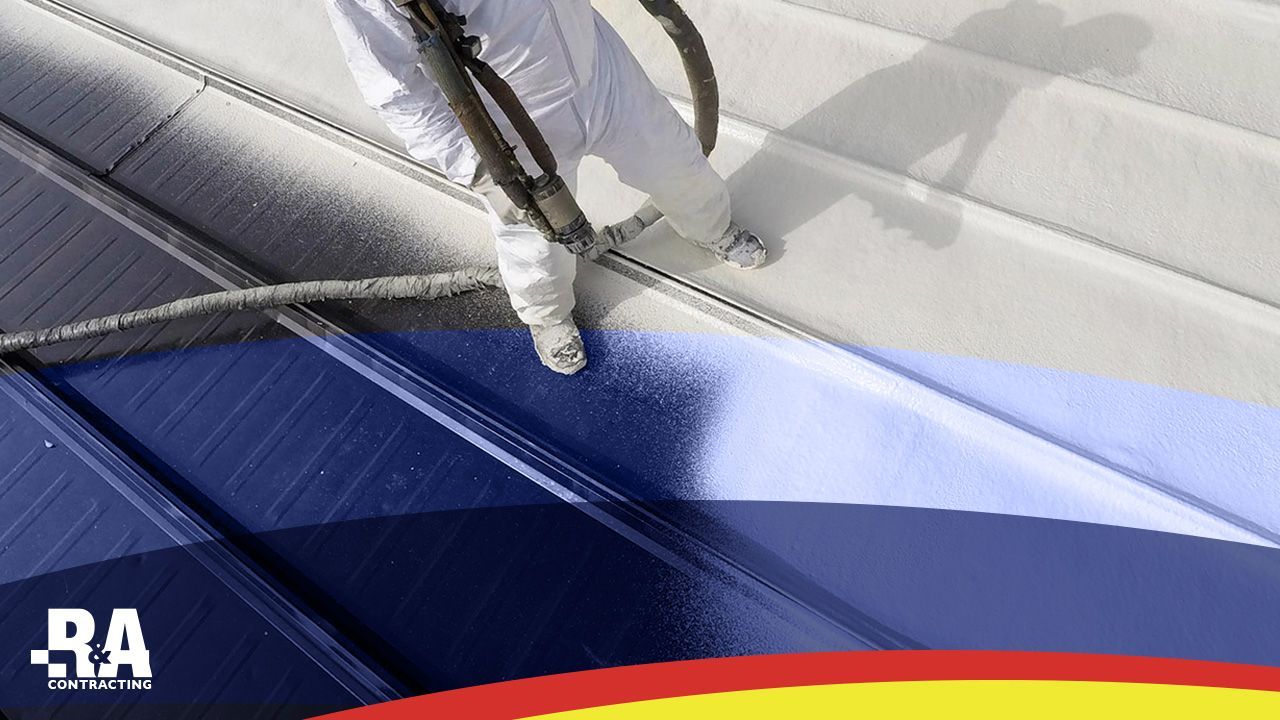
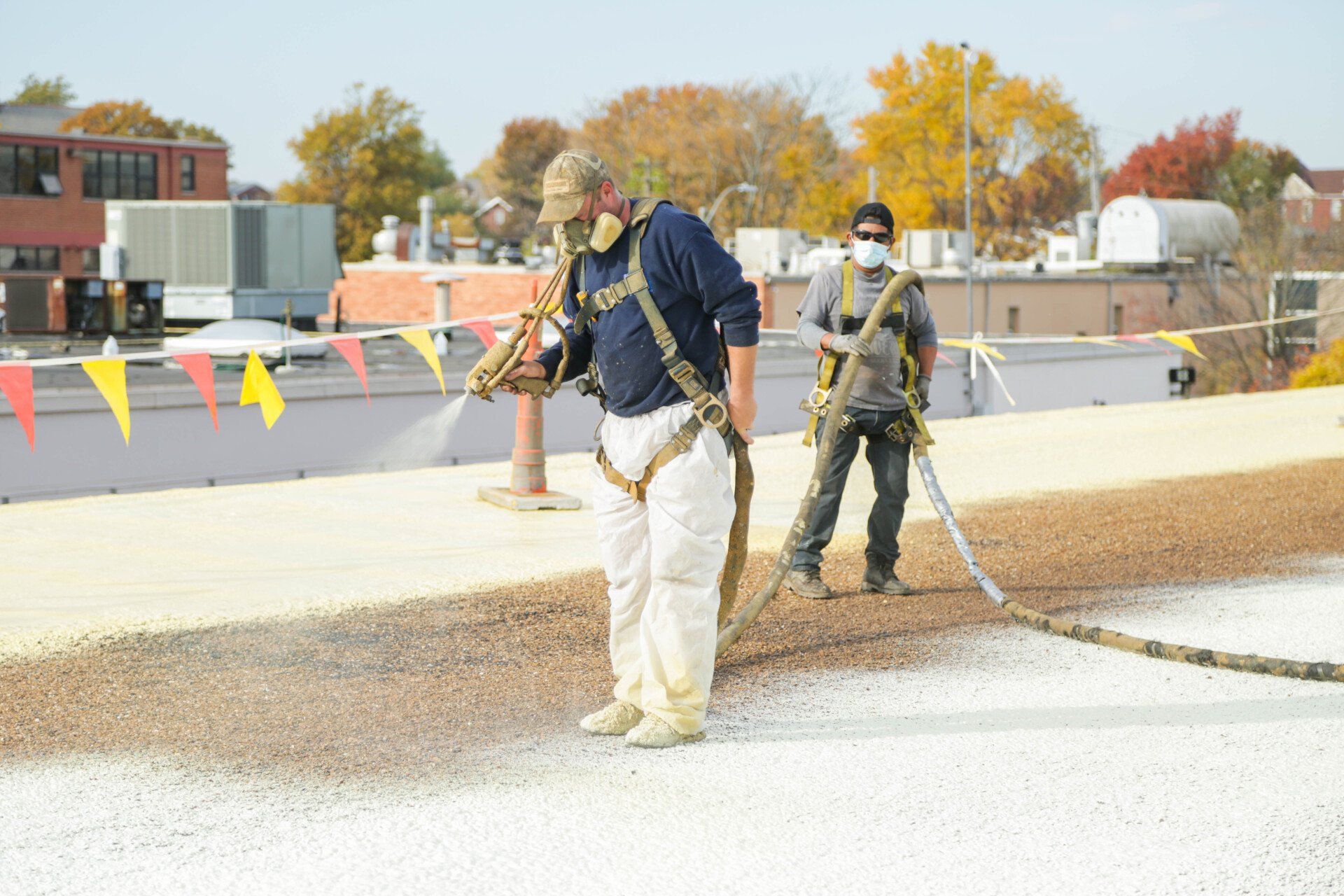

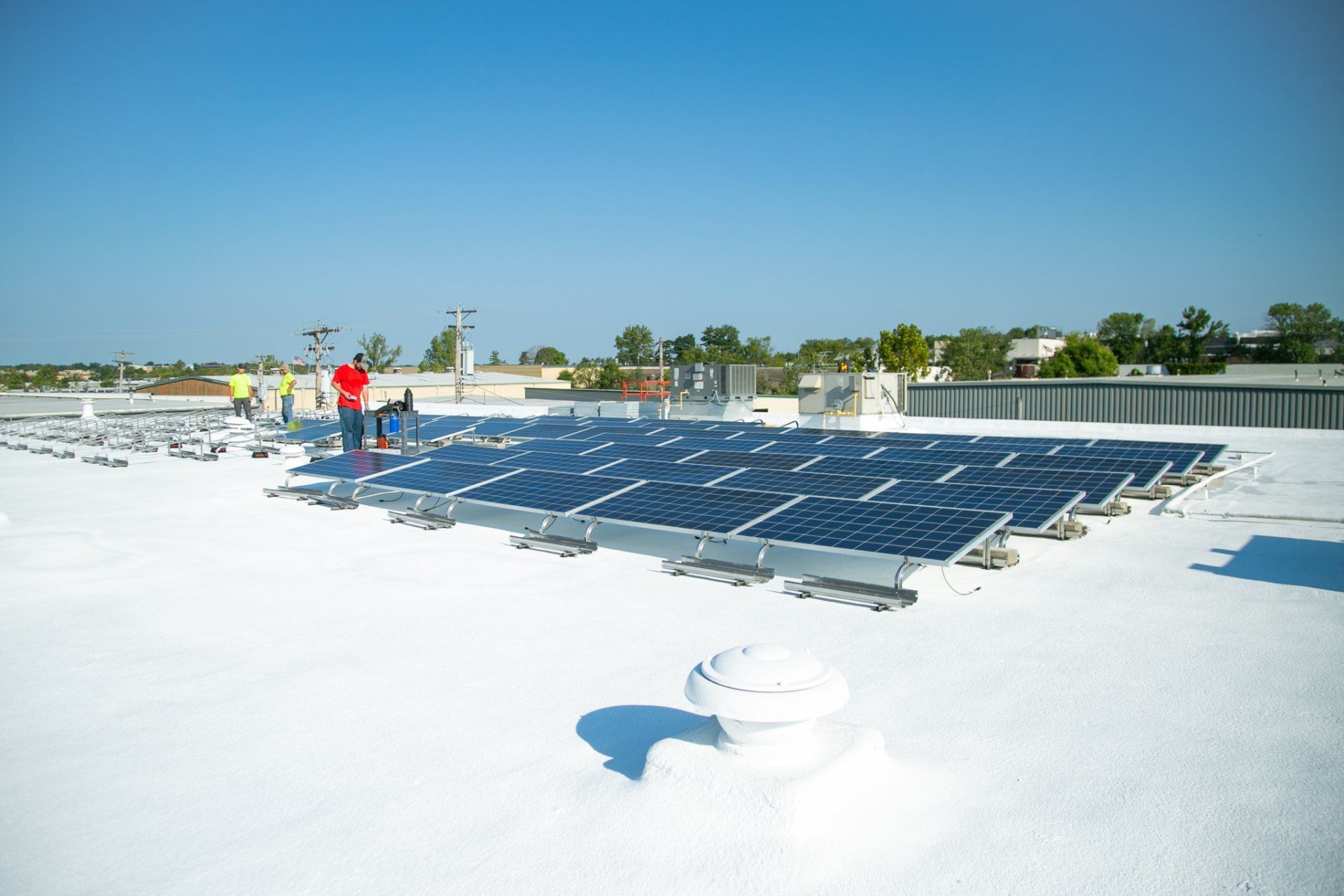
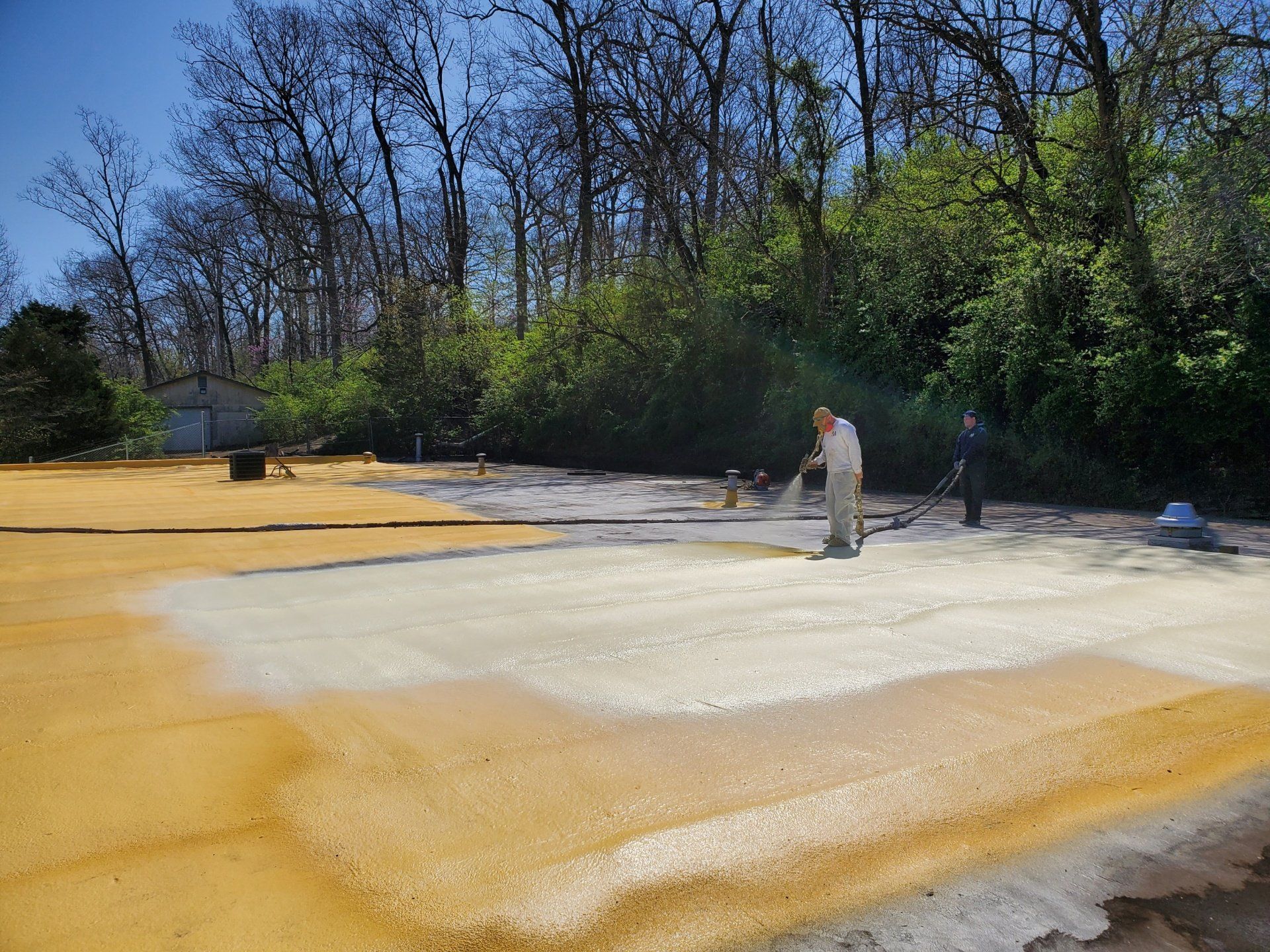
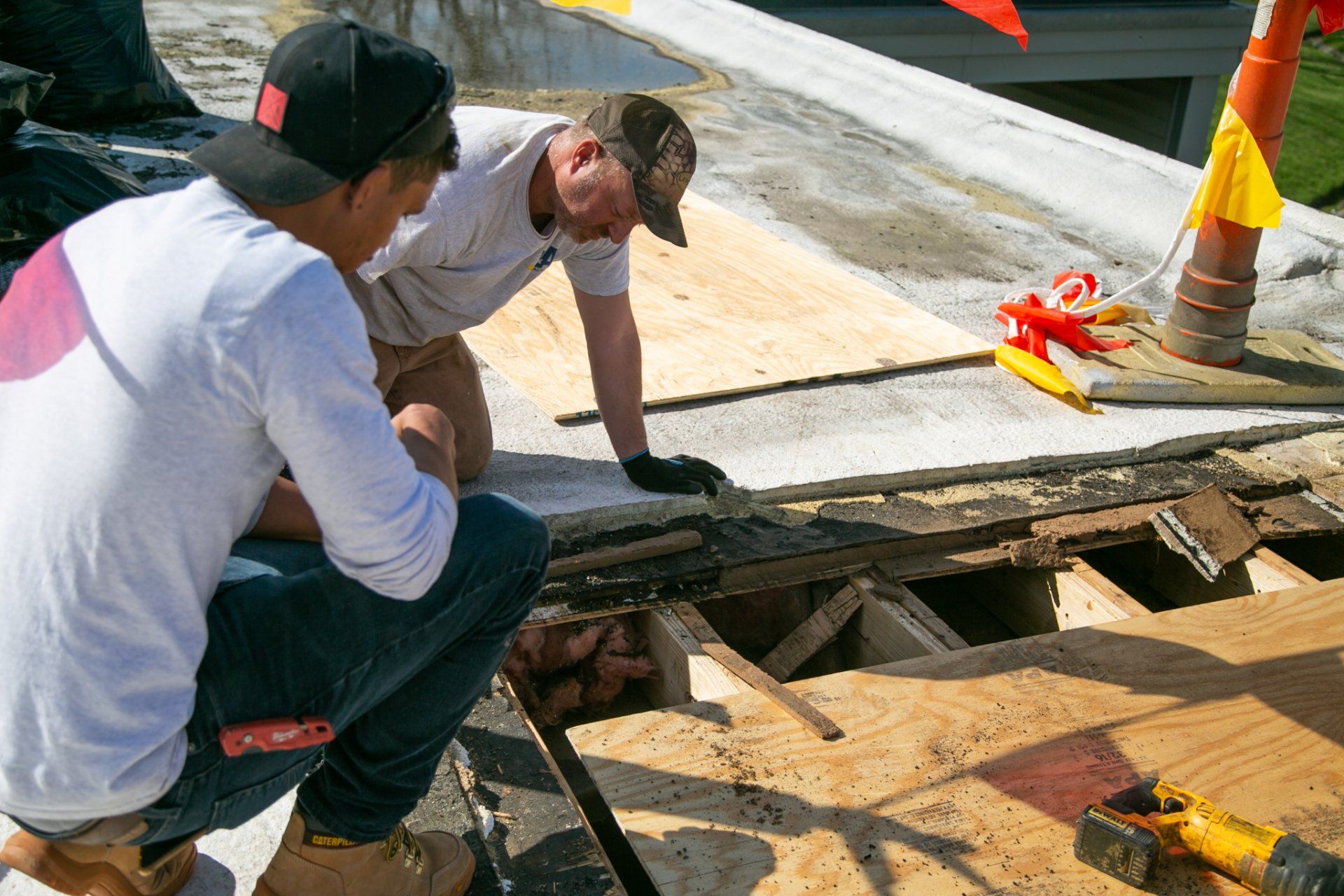
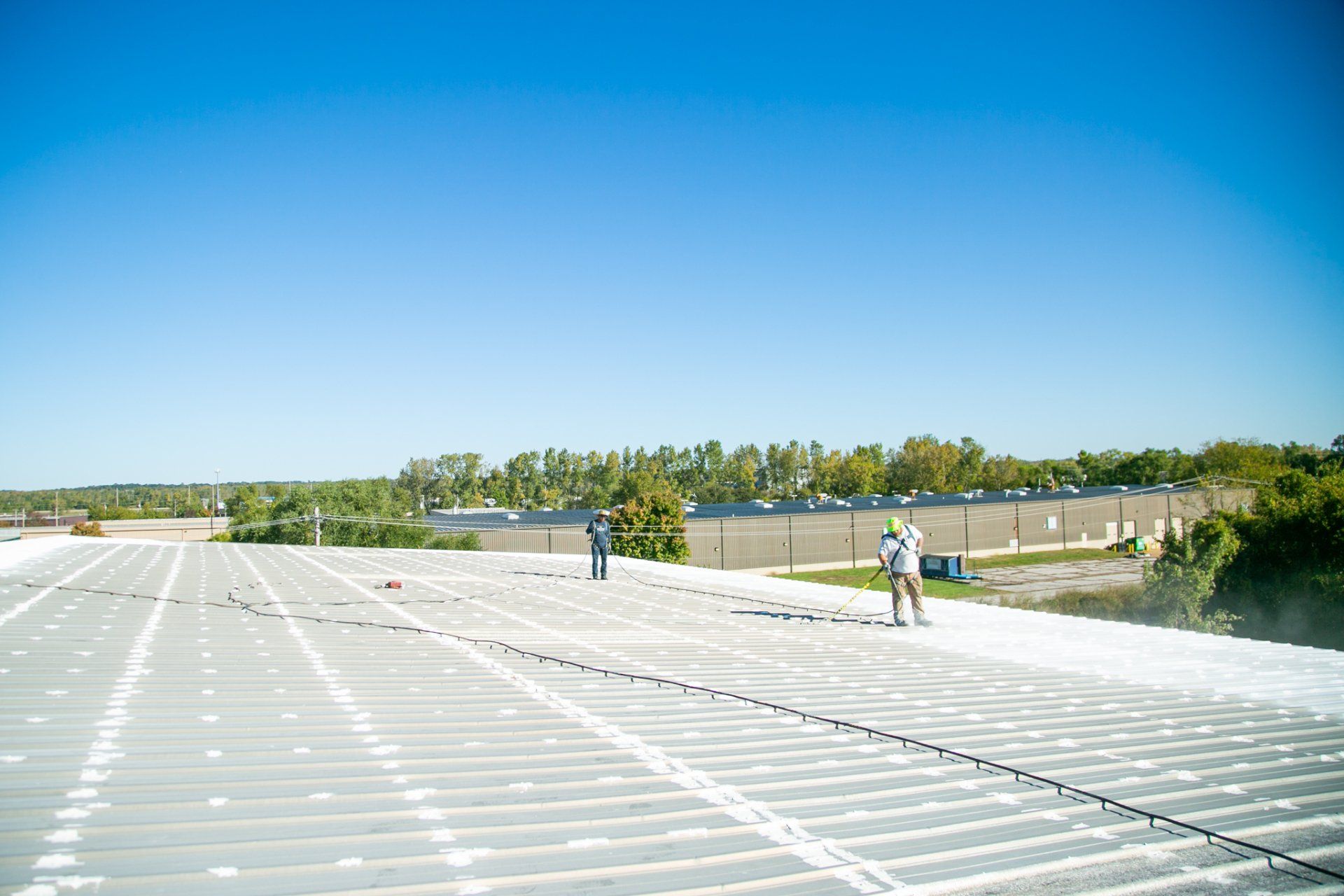
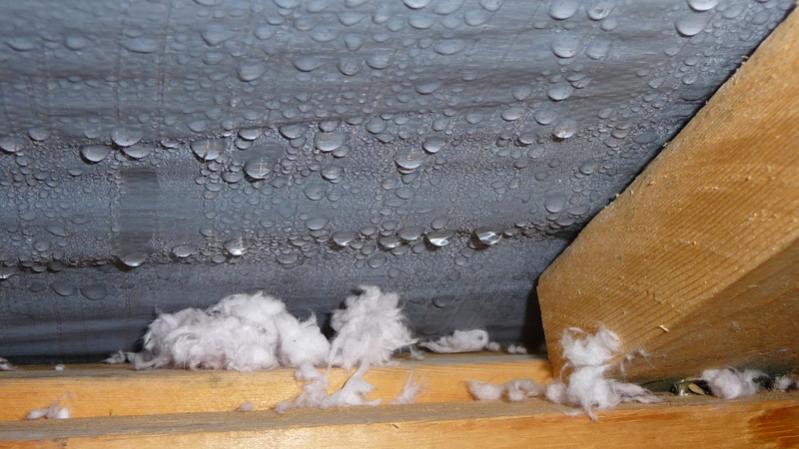
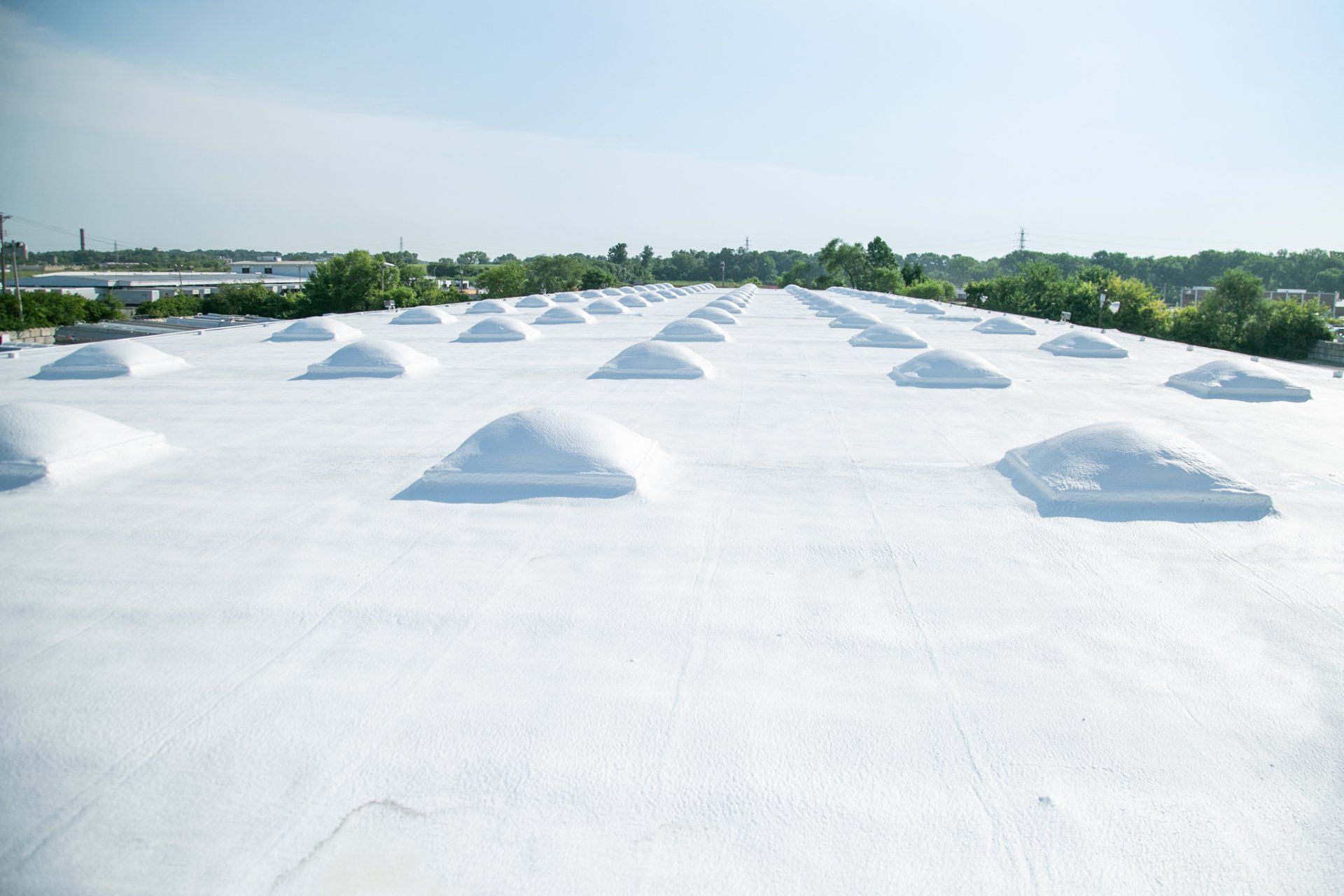

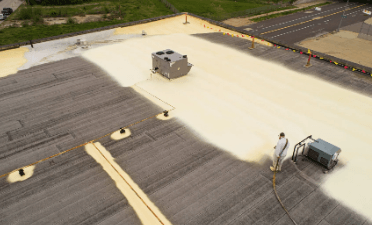
Share On: